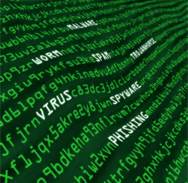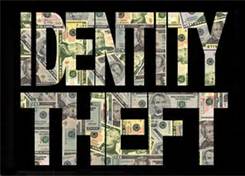



We are building our lives around our wired and wireless networks. The question is, are we ready to work together to defend them?
We lead the national effort to investigate high-tech crimes, including cyber-based terrorism, espionage, computer intrusions, and major cyber fraud. To stay in front of current and emerging trends, we gather and share information and intelligence with public and private sector partners worldwide.


Cybercrime is one of the fastest growing areas of crime. More and more criminals are exploiting the speed, convenience and anonymity that modern technologies offer in order to commit a diverse range of criminal activities. These include attacks against computer data and systems, identity theft, the distribution of child sexual abuse images, internet auction fraud, the penetration of online financial services, as well as the deployment of viruses, Botnets, and various email scams such as phishing.
The global nature of the Internet has allowed criminals to commit almost any illegal activity anywhere in the world, making it essential for all countries to adapt their domestic offline controls to cover crimes carried out in cyberspace. The use of the Internet by terrorists, particularly for recruitment and the incitement of radicalization, poses a serious threat to national and international security.
In addition, the threat of terrorism forces authorities to address security vulnerabilities related to information technology infrastructure such as power plants, electrical grids, information systems and the computer systems of government and major companies.

MAIN TYPES OF CYBER CRIME

COMPUTER INTRUSIONS
Bots. Worms. Viruses. Spyware. Malware. Hacking.
Every day, criminals are invading countless homes and offices across the nation—not by breaking down windows and doors, but by breaking into laptops, personal computers, and wireless devices via hacks and bits of malicious code.
It runs the gamut—from computer geeks looking for bragging rights…to businesses trying to gain an upper hand in the marketplace by hacking competitor websites, from rings of criminals wanting to steal your personal information and sell it on black markets…to spies and terrorists looking to rob our nation of vital information or launch cyber strikes.
Today, these computer intrusion cases—counterterrorism, counterintelligence, and criminal—are the paramount priorities of our cyber program because of their potential relationship to national security.
IDENTITY THEFT
Identity theft involves the misuse of another individual's personal identifying information for fraudulent purposes. It is almost always committed to facilitate other crimes, such as credit card fraud, mortgage fraud, and check fraud. Personal identifying information, such as name,, date of birth and bank account number is extremely valuable to an identity thief. With relatively little effort, an identity thief can use this information to take over existing credit accounts, create new accounts in the victim's name or even evade law enforcement after the commission of a violent crime. Identity thieves also sell personal information online to the highest bidder, often resulting in the stolen information being used by a number of different perpetrators. Identity theft can be very difficult for consumers to deal with, as they often do not know they have been defrauded until they are denied credit or receive a call from a creditor seeking payment for a debt incurred in their name.

CYBER STAKING

Cyber Stalking can be defined as the repeated acts harassment or threatening behavior of the cyber criminal towards the victim by using internet services. The Stalkers have desire to control the victims life. Majority of the stalkers are the dejected lovers or ex-lovers, who then want to harass the victim because they failed to satisfy their secret desires. Most of the stalkers are men and victim female.
SOCIAL NETWORKING SITES
One thing is for sure: teens love the new myriad of online social networking sites. In fact, there are tens of millions of registered users. But, as with just about any kind of cyberspace communication, there are risks involved. And you should know what they are.
What are social networking sites exactly? They are websites that encourage people to post profiles of themselves—complete with pictures, interests, and even journals—so they can meet like-minded friends. Most also offer chat rooms. Most sites are free; some restrict membership by age.
So what’s the problem? These sites can be appealing to child sexual predators, too: all that easy and immediate access to information on potential victims. Even worse, kids want to look cool, so they sometimes post suggestive photos of themselves on the sites.
How pervasive is the
problem? Even with all the media attention on the
dangers of social networking, we still receive hundreds of
complaints per year about children who have been victims of
criminal incidents on social networks. These incidents include but
are not limited to:


Children often don’t realize that they cannot “take back” the online text and images they post. They may not know that individuals with access to this information can save and forward these postings to an unlimited number of users. Kids also may not realize the potential ramifications of their online activities. They can face consequences for posting harmful, explicit, dangerous, or demeaning information online, including being humiliated in front of their families and peers, suspended from school, charged criminally, and denied employment or entry into schools.
© MMXX iDetective Inc. All Rights Reserved.